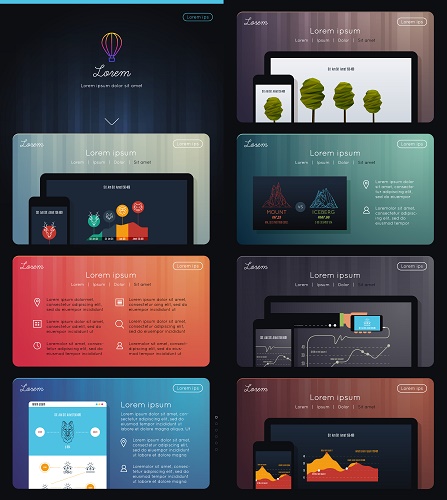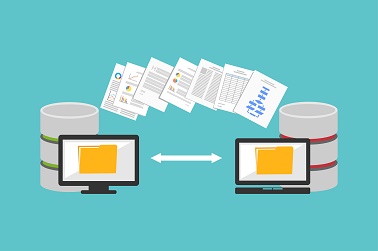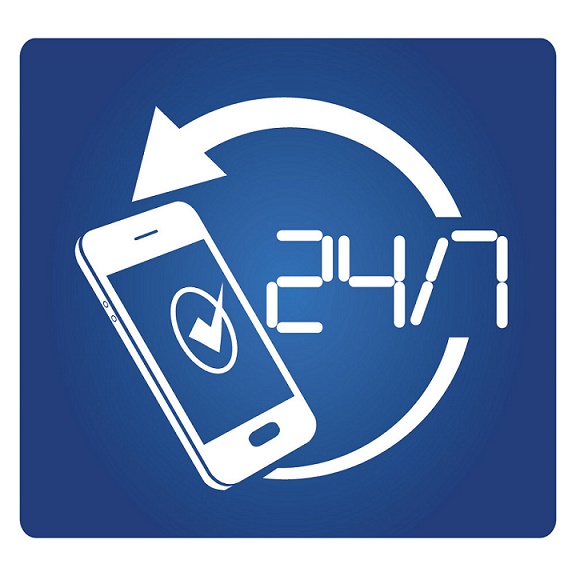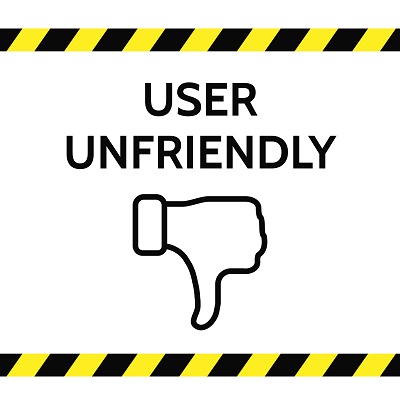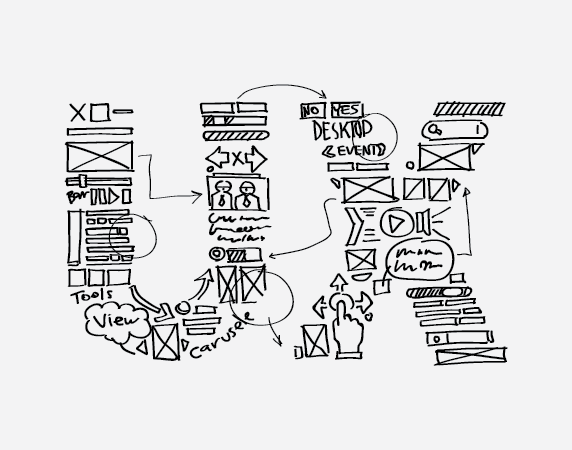Category: Enterprise Mobility
There are over two billion smartphone users in the world, and an average US adult spends about 3 hours and 15 minutes a day on mobile apps alone. The spread of the BYOD culture has led to smartphones permeate the enterprise in a big way as well.
The huge surge in adoption and popularity of enterprise mobility is not just owing to the unmatched convenience it offers, but also owing to its potential to unleash innovation that transforms enterprises and enable it to remain competitive in a highly challenging environment.
Unlocking New Possibilities
The direct impact of mobility is the ability to transform a static enterprise, limited by geography, to a dynamic enterprise transcending geographical limitations. A bigger benefit is, however, the ability to leverage mobility to realize opportunities and satisfy customers. IBM Institute for Business Value reports 84% of CIOs rating mobile solutions as a critical investment to get closer to customers.
Smart enterprises have unleashed several innovations that ushered in new business models, with enterprise mobility apps at its core. Businesses have leveraged mobility to offer new products and business models, ranging from Uber taxi solutions to distance learning courses, and from smart apps that allow customers to order their menu before setting out to the restaurant, to apps that allow passengers to choose their seats, meals, and special preferences at flights, and much more. Such innovation has permeated almost all sectors, freeing up staff, saving the customer’s time, improving accuracy, and offering a greater deal of choice and flexibility.
- Financial services leverage mobility to deliver new workflows, aimed at improving customer services, while strengthening their compliance practices at the same time. Mobility becomes an effective means to innovative and cope with the increasing pressure to meet continuously changing regulatory requirements and competitive threats while providing enhanced customer service experiences at the same time.
- Healthcare companies leverage mobility solutions to push healthcare information to patients and offer innovative options. Smart apps, for instance, allow patients to self-diagnosis and transmit key parameters to the physician.
- Retailers embrace mobile technologies to expand their customer base, offer better and innovative options for their customers. E-commerce itself was a path breaking innovation that has been extended to mobility in a big way. This apart, smart-devices offer a platform allowing customers to pay and purchase in many innovative ways.
- Manufacturers leverage mobility to forge an effective collaboration among employees, contractors, third parties, and even customers, at a global scale. Many manufacturers have successfully innovated with mobile apps to deliver end user requirements of reliable and fast access to critical design applications.
Centralization of the core end-user activities in the cloud at the backend enables unbridled access to mission critical applications on any device, and anywhere, and is a key enabler of delivering innovative business processes.
Another key area where enterprise mobility apps have a big impact is marketing. Today’s customers demand multi-channel engagement, with mobile devices a key element in the mix. Delivering innovative apps to serve the needs to the customer in the simplest way, and also stand out from the competition is the key to retaining customers.
Transforming the Enterprise
Mobile apps have transformed the workings of an enterprise in a big way, unlocking new possibilities, improving productivity manifold, accelerating the velocity of work, and more. The innovations in this space have been continuously on the rise.
The first wave of mobility resulted in apps connecting executives on the move, to facilitate real-time and instant decision making. Several apps also made work seamless. For instance, apps allowed employees to upload a presentation and use it at the client site. As mobile technology advanced, more complex innovations have started to emerge, such as enabling field service executives to connect to experts in the command and control center, to spare the need for revisits or even deploy highly paid technocrats to site visits. Apps powered by Augmented Reality enhance the insights available to a customer-facing employee.
Mobility facilitates a radical redesign of work. Consider the case of a debt collection team, or a machinery service team. The old way of assembling at the office every morning and making a list of site visits is highly inefficient as well as inflexible. Mobile apps automatically assign the next port of call for a debt collector or technician based on distance, expertise, and other factors, improving efficiency manifold, speeding up work, and delivering results in better job satisfaction as well. Mobile apps also keep the team updated on latest knowledge and information. In-built Location tracking capabilities allow team leaders to remain in control of the situation, without having to intrude.
For top management, mobility apps enable the enterprise and its key stakeholders to get access to contextual data in real-time. When routed through powerful analytical engines of today, the raw data is crunched into actionable insights, extremely useful to make high-quality business decisions based on real and emerging trends, and also seize the moment with a customer, improving customer satisfaction manifold.
A Survey by Constellation Research reveals more than 80% of the enterprises are aware of the impact of mobile transformation on internal and external stakeholders and have established dedicated teams to work on solutions
While the potential for mobile apps to transform the workplace and business is unlimited, such benefits do not realize without a nicely designed app that serves its intended purpose. We are experts at building highly intuitive power packed apps, with a veneer of simplicity, as our hundreds of customers, cutting across industries will vouch. With us as your partner, your mission to unleash innovative transformation becomes that much easier. Contact us now.
Stay up to date on what's new

Featured Blogs
Stay up to date on
what's new



Talk To Our Experts
In today’s highly interconnected world, marked by the dominance of the social media, a poor app is a virtual death sentence for the brand. With several options readily available, users are more likely to abandon transactions and even delete the app altogether when they encounter glitches and obstacles, or if they encounter poor mobile app design. Getting quantifiable insights into the extent to which a user is satisfied or dissatisfied with the app, and identifying the pain points that cause dissatisfaction is of critical importance in the wider scheme of things.
A survey by HP in Europe and North America reveals 53% of mobile app users delete an app if it crashes, freezes or produces errors, 49% of users no longer use an app with response times longer than two seconds, and 36% of users shun apps that are battery hogs.
UX is the name of the game in developing highly intuitive mobile apps that delight the customer. Here are some tools that offer greater insights and empower the developers to deliver a great mobile app design, and by extension deliver superior UX.
1. New Relic APM
New Relic APM is the leading mobile app performance management (APM) software. APM software offers in-depth visibility into the data consumed by the app, detailed monitoring of vital parameters including network monitoring, and monitoring of how users interact with the app. It helps resolve issues affecting end-user experience and generates advanced trend analysis.
Using New Relic APM, app developers, could, for instance, generate crash reports on the fly, to identify the underlying reasons that caused the crash, identify the root cause of why the service is not as fast or reliable as expected, unearth and fix errors, and do more. Just a few clicks make explicit the bottlenecks that hinder performance.
New Relic APM especially scores high on transparency, making explicit what exactly takes place behind the scene, which code paths are running, and more. Using the tool enables developers to troubleshoot and improve the app on a proactive basis, rather than wait for errors or issues to flare up before fixing it reactively.
2. HPE AppPulse Mobile
HPE AppPulse Mobile is another popular APM tool, offering almost all the functionality and benefits available with NewRelic. It also offers some additional features, such as a tag list capturing the data end users generate through their interactions with the app. This tool scores very on its user-friendly nature, offering developers very powerful features without having to write a single line of code.
3. Dynatrace
Dynatrace is another tool that offers live performance monitoring, allowing developers to detect problems and nip issues in the bud before it grows and saps the vitality of the app. The app also makes explicit performance trends, facilitating diagnosis of performance and identifying degradation in performance over time.
4. Dell Foglight
Dell Foglight is yet another APM suite, making explicit the behind-the-scenes working of an app. This tool co-opts some valuable features, such as a central repository which saves time in analysis, and a high level of automation, which reduces manual works considerably. It is strong in history, enabling effective analysis over time, something not available with many other APM tools.
5. HP AppPulse Mobile
HP App Pulse Mobile documents user interactions with the app, logging their swipes, taps, and stretches the screen, to make explicit user behavior, and offering a blueprint for improvement. Tracking how users navigate an app reveals unintended obstacles, how users circumvent such obstacles, and at what point users simply abandon the transaction, resulting in lost sales and poor reviews.
HP App Pulse Mobile integrates with HP Haven big data analytics to analyze the performance and stability of the app, the resources the app consumes and identifies any issues plaguing the app. The tool generates a score that makes it easy to compare UX among apps, and also offers recommendations to fix the underlying root causes of issues connected with the apps.
6. AppSee
The AppSee tool makes explicit what exactly users are doing on the app. It offers a range of intuitive reports and materials, such as session recordings, analytics, and heat maps, which reveal rich insights into several areas of the apps, including the most popular areas of the apps, trouble spots, unwanted features, how users navigate the app, and much more.
7. Applause
The Applause tool taps into the power of crowdsourcing, to target groups of users who use the app and inviting them into a survey to test the app. Applause also offers in-house expert usability surveys, narrated captures, consultations, and more, all aimed at generating the right feedback for the app.
With mobility gaining widespread acceptance, and more and more functions being implemented through mobile apps, the stakes of a good UX has never been so important. Maintaining constantly high ratings and acceptance for the app is a challenge, and nothing beats professional help. When you partner with us for your app development works, you are guaranteed high-quality apps, customized to your requirements, and superior in all aspects. Our highly skilled, talented, and resourceful team makes it a point to pay finer attention to the detail and use their wealth of experience to deliver high-quality UX sure to gain widespread acceptance.
Stay up to date on what's new

Featured Blogs
Stay up to date on
what's new



Talk To Our Experts
Android, the most popular OS for mobile devices, is still on a growth trajectory. Developing Android apps have now become indispensable for anyone who requires a strong presence in the vital mobility space. Here are some Android app development tips that make such app development easy, without getting bogged down with self-defeating complicated and extensive projects.
1. Get the Basics Right
The basic Android development tip, to which there is no workaround, is gaining skill in the underlying languages. Android is technically an operating system and a platform, or a collection of language by itself. Apart from Java which offers the programming language and XML that offers UI components, the mix includes HTTP for data storage and connectivity, SQLite for data storage, XML-RPC for connectivity, and Gradle and ANT for compiling, among other languages.
Learning how to install Eclipse, the Integrated Development Environment (IDE) for Java and the Java Development Kit (JDK) also helps. While it is possible to develop apps even without IDE’s, IDEs make things much easier, allowing compilation and running the code with just a touch of a button, sparing the need to painstakingly write additional code.
2. Gain Familiarity with Intuitive Tools
Tools such as Hierarchy Viewer, LayOutOpt, and others make Android development simpler and easier than it otherwise would while making the code more robust at the same time. The Android Debugging Bridge (ADB), the Dalkvik Debug Monitor Server (DDMS), advanced features of Traceview and dmtracedump are all effective debugging tools.
Hierarchy Viewer
Using Hierarchy Viewer <sdk>/tools/hierarchy viewer, while creating views, makes it easy to visualize complicated layouts, sparing developers the hassles of developing advanced styling under erroneous assumptions. The feature is available only on devices flashed with a developer version of the Android Platform, limiting people who can access it, and thereby improving security. An associated tool is Pixel Perfect, to zero in on the fine placement details of images, and ensure it renders appropriately on all densities.
LayOutOpt
Running layoutopt <sdk>/tools/ layoutopt, against an XML generates a short description of the issue, along with the line number where the issue exists and suggested resolutions. The tool suggests areas where the developer can use more effective platform attributes, to have fewer views rendered to the UI at run time. Developers can eliminate redundant views and save valuable time, besides making the code more optimal.
While there are several third-party solutions for each issue, using Android-specific solution is often simpler and yields better performance. As a good practice, explore other tools only when the Android tool is inadequate for the purpose.
Building a modular structure, with components fits for reuse between different layouts reduces the quantum of XML required, and prevents the code from becoming too unwieldy.
3. Make Extensive use of Themes
Another handy Android development tip is to make extensive use of themes, to manage the style across the app. Rather than take the code heavy route of declaring the height and width of every single layout items in views, wrapping the layout around a theme is much more effective and easier. Co-opting a rich styling early in the development process makes it very easy to deal with device idiosyncrasies at a later stage, something very handy in today’s age of device fragmentation.
4. Make Good Use of Forums and Resources
The extent of skills required for any project depends on the nature of the project and the range of functionality proposed for the app. For instance, learning how an API works is essential for apps that integrate Google Maps. Here, what matters is not whether the developer knows everything required, rather knowing where to find the information required.
Google is your friend. Among the specific forums, Stack Overflow, and the Android Subreddit are the most helpful Android communities in the cyberspace. Other forums such as CodeProject, DevShed, and CodeCall all have vibrant Android-specific discussions as well. For newbie developers, completing the “Building Your First App” lesson on the Android developer’s website is a good first step. The Android Developers channel on YouTube offers excellent video tutorials. A wealth of demos and tools for IDEs will ease an otherwise steep learning curve.
Each forum has its specific niche. For instance, StackOverflow is a good place for understanding what an error means, and for troubleshooting. The Android Developer Office Hours hangouts make it possible to ask the team directly
Being sociable is the key to success in such social forums. An active presence, sharing tips, frustrations, and links, is a great way to remain updated, and make development that much easier.
5. Approach Rapid App Development with Caution
The timeframes to develop an app depends on the features and functionalities required in the app. As a rule of thumb, about two months is the optimal time for a new developer to conjure up a standard run of the mill app. However, today’s fast-paced business environment demands fast-paced developments. Catering to such demands are several rapid application tools and development frameworks. Such rapid application tools facilitate rapid iterations, often offering an easy drag and drop interface, doing away with the coding requirements.
The efficacy of many such tools is limited to developing apps with basic functionality. Also, developers need to be wary of several dud products that pretend to ease development but is actually junk. It is a good idea to test a new or unknown tool them by developing a simple yet significant app with it.
6. Listen to the Customers
Last but not the least, the customer is always the king. Developers need to listen to their users. Rather than trying to implement what they know, they need to understand the features and functionality users want, ascertain the technologies which will enable them to realize such functionality and work towards acquiring the relevant skills to realizing it.
Also, while innovation is a rockstar in the open source Android world, “to break the rules you first must know the rules”. An understanding of established best practices is essential before trying to break out and develop your own unique niche.
It pays to tie up with a sound partner, who has a wealth of experience to understand what will click and what won’t, backed up by the resources to identify and incorporate the latest technology, the talent to blend industry best practices with innovation, and more. We are your perfect partners for the purpose, having developed hundreds of cutting-edge Android apps, cutting across industries.
Stay up to date on what's new

Featured Blogs
Stay up to date on
what's new



Talk To Our Experts
Small and medium businesses are discovering the value of mobile apps, both for the sake of engaging with customers better, and also for their internal business processes. As the practicality of mobile apps increases, way over “branding” for which apps were used not too long ago, the task of creating app has never been easier before.
Non-game app downloads are estimated to grow by 23% on average every year, until 2020, to touch $182 billion in revenue. The increased adoption of smartphones in emerging markets would result in an even greater popularity and adoption of an app. In fact, the number of downloads from mobile app store downloads is expected to double from 2015 levels, come 2020.
The Wind is Blowing in Favour of Apps
Several macro and micro level factors favor the development of enterprise apps.
App development kits are now very affordable and deliver high-quality apps in double quick time. No code and low code kits facilitate the development of apps without requiring any technical or coding expertise. Such kits automate several critical processes and offer intuitive templates which reduce the developer’s work greatly.
The success of any app depends on a sizable user base. The popularity of social media plays into the popularity of apps as well, with consumers now more open to engaging with brands on a day-to-day basis, even if they are not overtly loyal to the brand, or make regular purchases. As long as the app is entertaining and offers something of value, users will continue their patronage. Marketers can leverage the interesting or informative content with a strong call-to-action.
Customer demographics favor mobile apps. An average individual spends 174 minutes on mobile devices each day. Sales conducted through mobile devices are increasing at an exponential phase, and the figure is likely to get better with every passing year as the millennials show a greater affinity to purchase using mobile devices.
Apps Unlock Many Possibilities
The potential functionality possible with apps is also on the rise, making apps more viable than ever before. Enterprises increasingly find making a one-time investment in developing apps, say allowing customers to complete a booking, as well worth the effort, considering the increased business and savings from process efficiency such an app would bring about. If nothing else, apps enable push notifications that place the brand name and the marketing pitch directly in front of the smartphone owner.
The Red Hat Mobile Maturity Survey 2015 reveals about 35% of IT decision makers considering mobile apps as the best way to evolve the business, whereas 37% of them reveal the ability to automate routine tasks as the major motivation for developing apps. About 24% of decision makers developed apps to upgrade web-based processes to mobile. About 90% of enterprise increased their investment in mobile apps in 2016, with the average amount of investment rising by as much as 24%. In addition, a mobile app unlocks various possibilities, such as a field executive being able to present data or portfolio offline to a client, and close the sale immediately, without the risk of losing the prospect to a competitor.
All benefits notwithstanding, the underlying motivation behind enterprises adopting apps in a big way is the positive ROI it generates. About 74% of respondents in the Red Hat Survey attested to ROI from mobile app integration proving the value of implementation, and 78% of companies attest to mobile apps contributing to their success.
The Ease of Making Apps
Small businesses can now easily make both consumer dedicated and internal facing apps. Several services facilitate the creation of professional-looking apps, offering advanced features and functionality such as push notifications, location-based services, social media integration, e-commerce capabilities, mobile optimization, and more. Many services offer highly intuitive templates which allow even technically challenged users to create apps on the fly.
Several popular tools such as Xamarin, Appcelerator, IBM MobileFirst, and others make it easy to develop functional and working apps in double quick time. Rapid app development tools, backed up by databases, such as AlphaAnywhere, no code app creators such as AppPress, cloud-based drag and drop editors such as EachScape, template dominated development providers such as iBuildApp, ready-to-use sample app such as ViziApp, and scores of other options offer a host of ready-made options for enterprises.
Nevertheless, according to Gartner demand for enterprise mobile apps is outpacing development resources 5-to-1.
Enterprises seeking to ride the app wave by simply conjuring up an app and sitting back are in for a rude surprise. The success of an app depends largely on how well it is developed. A big reason for the widespread adoption of mobility is the device being easy to use and fun. Success apps are no exception. The best apps are highly focused. The UX especially make-or-break an app. Users seek powerful apps, yet prefer simplicity. There is also a need to consider the enterprise side of the equation, which is getting all stakeholders on board to reconcile what users want with enterprise requirements, and also ensure the app delivers positive ROI. Mobile apps cannot afford to remain static either, and require constant attention, upgrades, and feature enhancements, to stay relevant amidst an ever-fickle user base.
Only apps designed after understanding the needs of users and facilitating the same in the simplest and easiest way succeed. It takes the right blend of experience and talent to conceive such apps, and we have such experience and talent. Partner with us for your enterprise app development process, and leverage our highly resourceful team, who come with a wealth of experience cutting across industries.
Stay up to date on what's new

Featured Blogs
Stay up to date on
what's new



Talk To Our Experts
The spread of mobility has resulted in a proliferation of mobile apps. However, are apps superfluous when there are already highly intuitive, responsive websites which deliver the goods admiringly well?
On the face of it, mobile apps and websites seem as two sides of the same coin, but scratch beyond the surface, several differences emerge.
Accessibility
A mobile website is technically a shrunken-down version of a normal website, consisting of a series of linked browser-based HTML pages, and accessed over the Internet through the browser. A mobile app, on the other hand, is generally developed specifically for a mobile OS and configuration, and downloaded directly to the device.
Mobile website pages are indexed by search engines, and as such easily found. It is also easy to list a link to mobile websites in directories, and share such links through blogs, websites, and even in print media.
The visibility of apps is largely restricted to app stores. The apps cannot easily be pushed in directories, or the links shared easily. However, once installed, the app icon remains in the mobile screen always, and users may access it even offline. Also, once the initial trouble of getting users to download an app is done, the user is unlikely to go elsewhere.
UX and Design
Websites designed for mobile devices are generally different in appearance and UX, compared to conventional websites. Such websites often have larger icons and buttons to suit the touch-screen interface and improve UX. Incorporating responsive design ensures the web pages scale up or down, to be optimized for any sized device.
Mobile websites rely heavily on browsers to perform even the most elementary functions. For instance, it depends on browser features like ‘back button,’ ‘refresh button,’ and ‘address bar’ to work, with little scope to customize such basic features. The efficiency and seamless functioning of a mobile website depend on an up-to-date browser.
A mobile app is free of browser constraints and may be designed with elaborate and customized functions, co-opting ‘tap,’ ‘swipe,’ ‘drag,’ ‘pinch,’ ‘hold,’ and other advanced gestures. Such gestures may be leveraged for innovative functionality, and to perform tasks better. For instance, moving to the next page is much easier with a swipe than by having to press the back button.
Functionality
Mobile websites display text content, data, images, and video, just like any websites, but generally, have a limited range of options compared to a conventional website. Nevertheless, mobile websites are often cluttered with dense content, popups, ads, and other content of varying nature. Apps, in contrast, are designed to facilitate a specific function, process or workflow. The best apps are highly focused help users achieve something which cannot be fulfilled easily or seamlessly through the website. Some web developers try to give mobile websites the look and feel of an app, but often end up over-optimizing the website, complete with over-designed layouts.
Mobile websites are getting increasingly better at accessing functions such as click-to-call, SMS and GPS, hitherto considered the forte of apps. However, apps are still a better bet to access device functionality in a reliable way, especially the camera and the processing power of the device. Apps also facilitate a much deeper engagement.
Use Cases
Both apps and websites can be used to deliver the same content or functionality to users. However, both are best suited for specific purposes.
A mobile website, which offers ready access, scores over an app, which have to be downloaded first before the user can access the contents, when the intention is to offer ready content to a wide audience. However, for interactive situations, and use-cases involving complex calculations and reporting, and manipulated data, charts, and reports, apps are better suited than websites.
Apps are better to drive engagement. As long as the user takes the trouble to download the app, the odds are the user would open the app before trying to access anything else for the same purpose.
Flexibility-Customization Conundrum
It is far easier to update content in a mobile website, where changes to the back-end make it applicable to anyone who accesses the website. In contrast, to make changes in apps, the developer has to roll out updates for each app and push the same to the users. The changes apply only when users download the updated version of the app.
However, what the app lacks in flexibility to update content, it compensates in personalization. App also offers scope for greater personalization. Unlike websites, apps allow users to set preferences and be served customized content. Apps have the capability to observe and track user engagement, also leverage the device’s location capabilities, to provide users with custom recommendations and updates. One of the biggest advantages of mobile apps is the ability to send push notifications. Push notifications deliver click-through rates of about 40%.
Cost – Performance Conundrum
Apps generally cost more to develop and maintain compared to websites, for the simple reason a new version of the app has to be developed and maintained for each OS or platform. The mobile app development process has to be repeated for each platform. In contrast, a single instance website runs across all devices.
Again, apps compensate through superior performance. Well-designed apps perform actions much quicker than mobile websites. Apps store data locally on the device, whereas websites have to pull in data from remote web servers. Apps, by virtue of its high customization features, take proactive actions on users’ behalf, further speeding up things.
A mobile website and a native app are not necessarily mutually exclusive. What works best for any enterprise depends on several factors, such as the preference of target audiences, whether there is a critical mass of subscribers, budget on hand, intended purpose and required features. Many functions, especially marketing related, require both a mobile website and a mobile app. Generally, the mobile website is the first step in developing a web presence, and apps follow.
Ultimately, the proof of the pudding is in the eating. Mobile users spend 86% of their time on mobile apps and just 14% of the time on mobile websites. However, while an app offers several big advantages, the advantages realize only when the mobile app development is done the right way. Do not take chances with your app development process, and fritter away both your competitive advantage and investment. Get in touch with us to leverage our highly talented, resourceful, and experienced teams, who are adept in delivering cutting-edge mobile solutions.
Stay up to date on what's new

Featured Blogs
Stay up to date on
what's new



Talk To Our Experts
Mobility is the rage among enterprises, as the benefits of anywhere-anytime connectivity and productivity-efficiency improvements start to sink in. However, amid the hype, the hard reality of user engagement is starting to bite. The challenge is to produce mobile apps that drive user engagement and produce it quickly, to keep pace with the fast-changing business requirements.
Driving user engagement requires offering a compelling experience for the target users. Here are the ways to do so, and thereby meet enterprise mobility demands in a successful way.
Fix the Scope
The very purpose of rolling out apps, as an alternative to the website, is to offer enterprise users the convenience to focus on a specific function or purpose, without being cluttered or distracted by unnecessary features. As such, the scope of any app is all important. A proper definition of the scope of the app, or what the app does, can make or break it.
The apps in highest demand by enterprises, cutting across industries are customer relationship management apps for sales, marketing and services, customer engagement and general employee productivity apps. However, even within such classification, the best apps facilitate only specific tasks.
A key consideration when deciding on the scope is to evaluate the benefits various segments of the workforce expect from the app, and how such benefits sync with the overall objectives of the enterprise.
Although employee job satisfaction is critical, the success of the app ultimately depends on the scope of the app, and deployment decisions having a direct correlation with the overall business objectives, be it improving customer service, increasing productivity, driving costs down, or anything else.
The best mobile apps leverage the power of simplicity. They may have a complex backend, with integration and cross-links to several enterprise function and resources, but still deliver a simple, neat, and clean user interface. The user gets a clear cut menu, allowing them to do powerful things with amazing simplicity. User experience is ultimate to ensure high adoption
Demolish Data Silos
An app is only as good as the data it handles. Even the most intuitive of apps will not gain sufficient traction if it is unable to access meaningful data. A big bane of enterprises and a key reason why enterprise apps fail is data trapped in inaccessible silos. Demolishing data silos, and centralizing data to an easily accessible location is an important prerequisite before launching enterprise apps.
It is also important to deliver content in a mobile experience that ties into the content management system, to ensure seamless sync. For instance, a mobile app to offer added value to a field marketing executive, he needs to access the latest information regarding the client, when engaging with the client at the client’s office. Likewise, the information of such meeting needs to be updated into the CRM in real time, for the enterprise to take action on the latest and updated information.
Need for Proactiveness
No matter how intuitive apps are, users need to be coaxed into using it. The most successful apps are “proactive,” leveraging an integrated set of engagement services such as in-app messaging, push notifications, dynamic use of analytics, and more. The best apps keep tracking what the user will most likely do, and issue timely reminders and prompts in this direction.
Method in the Madness
With the craze for apps, an enterprise will invariably find themselves saddled with a plethora of apps, and things can quickly get out of control. An average enterprise in Europe and USA would deploy around 10 or more enterprise mobile apps during the next two years. A good way to manage existing apps is by leveraging the mobile capabilities of Adobe Experience Manager, which helps to centralize all apps in a singular, unified dashboard.
A Hybrid Strategy
Most enterprises have limited capabilities to conjure up intuitive mobile apps on their own. Their in-house IT team in almost all cases is invariably neck-deep in routine tasks without having time to take up the time-consuming app development process.
Enterprises always have the option of promoting a resident mobile app team, by either hiring the right talent or investing in training the right people with the required skill-sets. However app development skills are hard to come by, and technology is any way in a constant state of flux for investment in any specific skill set to deliver long-term ROI. Other limitations such as budget and resourcing limitations, legacy infrastructure, technology fragmentation and immature lifecycle workflows also contribute to making internal development teams a non-starter.
Outsourcing the development task to a contractor is a far more cost-effective, and offers enterprises the best of both worlds – access to talent without the associated overheads of hiring.
Considering such factors. it comes as no surprise Forrester Research estimates enterprises spent $18 billion to contractors in 2016 to build and maintain mobile apps. The global market for enterprise mobility is expected to touch $284 billion by 2019, a four-fold jump from the present levels of $72 billion. Even large companies, with personnel requirements for app development and maintenance, and budget on their hands, adopt a hybrid approach, using outsourced skills to build mobile apps, and side-by-side train employees on building and maintaining mobile apps.
However, unless the enterprise selects the right contractor, the money spent goes down the drain. Ensure the contractor has the right expertise and has a track record of having implemented successful mobility projects. We tick all boxes, bringing with us our wealth of experience, a pool of highly talented and resourceful development team, and the latest cutting-edge tools to get the job done well in double-quick time. App development is our core competence, and our team comes fully conversant in the latest development styles, user experience best practices, and more.
Stay up to date on what's new

Featured Blogs
Stay up to date on
what's new



Talk To Our Experts
The world of technology is changing by the day, and placing bets on any new technology is risky. A new technology may be hyped up as the bright new hope for mankind, only to be shunned in a few years or less, as realities bite and drawbacks or stumbling blocks start to emerge out of the hype.
In such a state of affairs, it pays to invest in a time-tested technology. Mobility offers a safe bet, having withstood the test of time. Gartner estimates the demand for enterprise mobility apps to outstrip the capability of internal IT in enterprises to deliver such apps, by five times, by the end of this year. Mobile phone sales are likely to touch 2.1 billion units by 2019, further fueling the demand for mobile apps. Mobile users spend as high as 86% of their time on various apps.
The high demand for enterprise mobile apps is owing to a variety of factors that are not going to go away anytime soon.
Mobile Apps Improves Internal Efficiency and Productivity
Mobility empowers busy on-the-move executives to remain connected always, from the airport, from the client’s reception, from the dinner at the hotel, from the swimming pool, and just about anywhere else, when on the move. It enables field service executives to connect to the office in real-time, top management to remain in control of the situation during business trip, the busy executive to start working when commuting to work, the marketing executive to get details of the customer even while meeting her, and a host of other live situations. The real-time decision making, accelerated processes and such anytime connectivity triggers help businesses close more deals, and do much more with available resources.
The investment in enterprise mobile app often pays back for itself just through efficiency improvements. A case in point is the app making data collection related to customer preferences and action automatically, sparing the enterprise from the otherwise slow, tedious and resource intensive process.
Mobile Apps Deliver Unmatched Customer Convenience
Mobile apps are a rage in the customer-facing space as well, where intuitive apps enable customers to engage with the company better. Customers use their smartphones to explore a product, shop, to find a business, initiate an inquiry, and more. Mobile apps offer a one-stop point for the customer to interact with the brand. In fact, a mobile app is one basic expectation from any brand worth its product.
With a customer app, the customer virtually gets all information related to the business in the palm of their hands. It boosts engagement, allowing customers to engage with the business when whiling away time on the train, waiting for the dentist’s appointment, and at a host of similar situations. In the absence of a convenient way to initiate interaction, at such convenient time, the customer may not initiate an interaction at all.
Mobile apps cater to a larger, younger audience. About 75% of the millennial generation now own a smartphone, and it is hard to engage with them through technologies that are past their sell-by date.
Mobile Apps are the Marketer’s Dream Come True
Mobile apps facilitate on-the-go marketing, allowing new customers to find about the business easily, and existing customers to get in touch for any requirement, equally easily. A user who downloads an app is as good as a loyal customer, for the downloaded app is likely to be the first point to search for a product, and make a purchase. Regular use or even visibility of the app reinforces the brand image in their minds as well. Mobile apps may also leverage location and other personal information from the mobile devices, to tailor customized offers.
Mobile apps also make it easy for regular customers to get in touch with customer support easily, and customer support to address the needs to the customers, in an informed way.
Developing mobile apps offers spill-over benefits as well. Merely creating a mobile app gets the company access to app indexing, making it that much easier to be found in Google search results. Users get the option to download the app when they search for content related to the app.
Businesses that fail to adapt to the mobile will soon go extinct, and there is no better example of this than the fate of Kodak, Yahoo and Nokia, once household names, now no more as they failed to adapt to the mobile.
However, the mere creation of an app is not enough. Only apps developed the right way, incorporating the right features, gain traction. For instance apart from easy features to browse and shop for a product, apps that facilitate social sharing, by integrating options to make comments, likes, and also in-app messaging is likely to be well received. Likewise, while demand is high, competition is equally high, meaning customers would rarely give the app a second chance. Mess it up the first time, and the odds are the storage-space starved customer would straight away delete the app and install a competitor app, thereby losing the customer for life.
A big challenge with regards to rolling out mobile apps is the overburdened internal IT team, and the difficulty in hiring competent developers. However, at the same time, the mobile app development space is not the one for experimentation or trial and error. It pays to partner with an experienced and strategic partner like us, who have a wealth of experience in rolling out highly intuitive and well-accepted apps, cutting across niches, industries and sectors. Partnering with us allows your business to leverage the wealth of knowledge and best practices inculcated by us over time, and also gives you access to an extremely competent talented pool of professionals who are adept in rolling us highly customized and innovative apps that pass the test of high performance and usability, to perfect suit your business requirements.
Stay up to date on what's new

Featured Blogs
Stay up to date on
what's new



Talk To Our Experts
About 71% of enterprises regard mobility as a top priority, and Nasscom estimates the global enterprise mobility market to be worth $140 billion a year. Such widespread adoption of enterprise mobility solutions come as no surprise, considering an employee gains 240 hours a year on average, in terms of productivity, if they use cutting edge mobility solutions at work.
However, mobility is still an emerging technology and an extremely fluid space. New paradigms emerge by the day, and there is no standardized way to apply or govern technologies. Success requires a lot of trailblazing, adopting the latest trends, and tackling challenges head-on. Here are the latest trends to follow, and the challenges to overcome in future.
1. The Rise of Companion Apps
Enterprises are scrambling to develop enterprise apps for both their internal functions and for their customers. Rather than generic apps, there is now an increasing shift to companion apps, or apps aimed at making a specific thing or function easy, rather than try and replicate every single feature of a desktop app.
Research major Gartner estimates the demand for enterprise mobile apps outstripping available development capacity by five times. The pressing challenge before enterprises is to solve the grave talent crunch, and develop the required mobile apps, or run the risk of losing out big time in productivity and new possibilities. Enterprises also face a far daunting challenge of unlocking data silos to ensure mobility solutions work optimally.
2. BYOD Becomes Much More than a Trend
The Bring-Your-Own-Devices (BYOD) culture is already well-entrenched in the corporate world. The tremendous productivity and efficiency benefits it brings out, coupled with the rising popularity of mobility apps have graduated BYOD to much more than a trend. BYOD is fast becoming the established norm in many enterprises.
BYOD however brings new challenges in its wake. Employee devices rarely feature the required enterprise-grade security features, and the enterprise IT team remains hard-pressed to manage the wide range of BYOD devices that operate within the corporate network. Mobile device management (MDM) solutions, implemented to ease out potential pain points often hinder the productivity or fluidity of the work carried out on the devices.
Enterprises need to devise effective mobility policies that secure employee-owned devices. Centralizing the management of mobile devices, akin to remote management of PC and notebook desktops enable enterprises to have control over the devices in use. The trick is to roll out such policies without compromising the privacy of employees.
3. Accelerated Migration to the Cloud
The increased maturity of cloud services, the easy availability of affordable and reliable cloud services, and the game-changing possibilities with big data has accelerated migration of enterprise solutions to the cloud.
The increased popularity of the cloud notwithstanding, security remains a pressing challenge. Enterprises seeking to reconcile the security issue increasingly opt for hybrid solutions, hosting mission critical apps on premises and other apps on the cloud. The increasing stakes of security mean regulatory security controls may not be too far away.
4. Personal Assistant-Friendly Features Go Mainstream
Artificial Intelligence (AI) technology has already made its mark in computing. More and more enterprise apps are now becoming “smart,” leveraging features such as those offered by Siri, Google Now, Cortana, and other smart personal assistants. There is a boom of “smart apps” that allow users to control lighting, heating and security systems using Siri.
As AI makes the enterprise more and more dependent on technology, security becomes even more important than before, and security breaches run the risk of bringing down the entire enterprise. The onus is on the enterprise to guarantee effective security.
A key focus of enterprise network security now is effective threat management, or identifying potential vulnerabilities and operating system-specific threats. A multilayered approach that authenticates enterprise applications, reinforced with agile device management solution is the way to go for most enterprises.
5. The Rise of Citizen Developers
The growing demand for enterprise apps has resulted in the rise and popularity of cross-platform low-code and no-code app development platforms, which offer easy drag and drop options and accelerate the app development timeline greatly. Side by side with such new app development technologies is the rise of citizen developers, who can leverage such platforms to develop apps on the fly, with little or no coding knowledge.
Accelerated app development and the rise of citizen developers present its own challenge of half-baked implementation and serious vulnerabilities in the developed software. Native apps, developed for the platform, are generally more feature-rich and deliver a better user experience, over the HTML5 based cross-platform app development. Native apps also allow administrators more control.
Your best bet to overcome such challenges, while tapping into the latest trends at the same time, is to partner with a sound professional developer like us. Partnering with us allow you to leverage our wealth of experience and expertise in rolling out highly intuitive enterprise mobility solution that meets all your objectives, in a cost effective manner.
Stay up to date on what's new

Featured Blogs
Stay up to date on
what's new



Talk To Our Experts
About one in every two enterprise mobile apps essentially become useless within two years of launch, leading one to suspect something ails enterprise mobility. Are the perceived benefits a big hype? Read on to find out the common pitfalls that plague enterprise mobility, and the possible solutions.
- Improper Scope
Many enterprise decision makers mistake mobile apps as an extension, or another interface for their website, and pack the app with features. Such apps are doomed to fail right from the word go. Others do an improper scope, and pack in features not relevant for the users.
Apps are simple, lean, bite-sized, personalized, and contextual. By the very nature, apps are meant to fulfil a specific highly focused task, easily and well, with minimal navigation or typing. There is nothing preventing enterprises from launching hundreds of apps to cover the entire gamut of functionality possible through the website, but packing all such features into a single or even a few apps is a sure route to disaster.
- Failure to Prioritize
An average enterprise has 700+ business applications. Offering a mobility solution to even 10% of such applications would require 35 years, considering a minimum of six months of development time for each app. Of course, the latest rapid application development techniques, no-code or less-code app development strategies, and the possibilities of developing more than one app simultaneously makes 35 years an exaggeration, but the fact remains trying to offer mobility solution for everything may be too big for the company’s boots. A successful mobility strategy requires intelligent prioritization, rolling out mobility solutions for processes and services that need it most, such as field service and marketing work, and then widening the net, one function at a time.
- Poor User Experience
About 78% of enterprise mobile apps are abandoned after the first use. The reasons vary, but single biggest pitfall is failing to cater to the user. No matter how good the features and functionality of the app, it won’t succeed unless users actually download and start using it.
A 2014 Forrester study estimates 64% employees rarely using enterprise apps, owing to poor user experience. If the app, instead of making things easier for the end-user, actually makes it harder, or makes no difference, there is no reason why users would change over from something that is already working for them. Many developers replicate the existing business process without considering simplification of complex processes.
Many app developers, having to deal with a number of pressing issues, do not give user experience the importance it deserves. Enterprise app developers need to think like a user, how they would prefer to use the app, and how they would benefit from it. Unless the apps are easy to use and have a user-centric designed, it is sure to fail. The enterprise needs to not just make sure the apps solve a pressing need and is easy to use, but also communicate with the users to drive home the benefits. If required, they need to also train users on how to use the app and derive benefits out of it.
- Lack of Adequate Groundwork
Side-by-side with poor UX, obsolete technology may also impede app acceptance. Many enterprises continue to use legacy systems not compatible with mobile services or have their critical data trapped in silos, preventing apps from pulling in the required data. Such roadblocks leave users hamstrung, forcing them to opt for other means to get their crucial tasks done.
Also, unless the app is flexible enough to address device management, app management, content management, mobile device support, mobile collaboration, mobile network security and other crucial technical issues to match the needs and preferences of users, the odds are of the app failing even before it gets started. A good native device experience or catering to device users prefer is another crucial requirement for acceptance.
- Lack of Adequate Marketing
Personal apps available in app stores require extensive marketing and promotions to sustain and thrive. It is a misconception to think enterprise mobility apps do not require such marketing or promotion. Very few enterprise users are likely to download an app just because it is there in the recommended play store. What is different is only the nature of marketing or promotion required.
Enterprises would do well to reach out to the key stakeholders, and purchase their buy-in by making explicit the benefits of using the app, and incentivizing its use. There may also be a case to train app users.
- Security Loopholes
Many people are still wary about installing and using mobile apps, for the security challenges it poses. Their fears are not unfounded either. A 2015 IBM study reveals 40% of large corporations, which includes several Fortune 500 companies, not having the necessary precautions to prevent security breaches in customer apps.
Unsecured API access is a big security risk associated with mobile apps. At any point of time when the developer deals with business logic, validations, or access permissions, they add to the risk and multiply the layers of error-laden complexities. App developers would do well to choose role-based access, based on business logic instead.
- Risk of Inexperienced or Sleazy Developers
The developer can make or break an app, especially when there is a pressing shortage of talent. Even if the developer is talented, there is a very good chance they would end up underestimating the work and effort required, ending up making shortcuts, compromising on key features, and skipping functionalities, to meet the timeline and budget estimates.
There is also the risk of sleazy developers quoting a low estimate and painting a rosy picture to get the work and undertake shoddy implementation. Ascertain the track record of the app development partner before signing a contract.
There is no shortcut to experience, to avoid the above mentioned pitfalls. Partner with us to leverage our considerable experience, and also the expertise of our talented pool of developers. We have developed cutting edge mobility solutions for enterprises across the spectrum. Our solutions have withstood the test of time, and go a long way in transforming the enterprises in which they are deployed. Hundreds of satisfied clients stand testimony to our expertise in developing enterprise mobility solutions.
Stay up to date on what's new

Featured Blogs
Stay up to date on
what's new



Talk To Our Experts
Mobility is booming. The number of mobile users worldwide touched 4.43 billion in 2015, and the figure is expected to reach 5.07 billion by 2019.
The rise of mobility has corresponded with a surge in demand and acceptance of mobile apps. However, expecting a free ride by conjuring up a namesake app is asking for trouble.
Enterprises have no option these days but to roll out mobile apps for the convenience of their internal users and employees, but success demands such apps be of high quality and have a high degree of user adoption. Here are some tips in the direction.
1. Get the Basics Right
When it comes to mobile apps, the first degree of association is with a responsive design, where the format adjusts automatically, to suit the highly fragmented screen size of mobile devices. However, responsive design is now the basic requirement, as is effective planning on the scope of the app, and creating a prototype.
It requires much more effort that such basics to build a successful mobile app.
2. Never Compromise on the UX
The best apps are well designed, both in terms of visuals and the user experience (UX).
Never underestimate the power of simplicity. A simple, neat and clean interface best suits most mobile devices, with its small form factors. Simplicity is not just in the design, but also in the feature list. Make sure to eliminate any unnecessary feature, and make everything clearly visible. Even subtle changes in design make a big difference in usability.
The best UX design is also relative to the platform. Each platform has a native way of screen layouts, displaying information, and navigation. For instance, iOS tabs have a built-in NavigationController, facilitating multiple levels of navigation inside each tab. Android tabs, on the other hand, are shallow, and have no in-tab navigation. Trying to implement iOS-like functionality in Android, such as in-tab navigation leads to confusion, and is counterintuitive.
3. Focus on a Specific Function
The biggest mistake related to mobile apps is considering the app as a micro version of the website. The most successful apps cater to a specific function or niche. It solves a specific problem or does a limited number of things, but enables doing it well. For instance, a field service app makes the life of a field service technician easier, by allowing her to download the relevant inspection forms, access information related to the plant she is visiting, and connect with external help for real-time troubleshooting. Saddling the app with unnecessary features such as customer care, sales reports and more would only serve to make the app bloated, harder to use, and counter-intuitive.
At the same time, make sure every single enterprise app is part of a wider mobile strategy, and as an opportunity to engage with customers, be it external customers or internal customers, in a better way. Spend time on the purpose of the app, making sure it serves a specific purpose that is needed in the first place. Also, make sure each app is a vital spoke, and all apps added together to complete the comprehensive whole in organizational functionality.
4. Leverage the Features of the Mobile
Unlike websites, a mobile app has the capability to push information to users, leveraging geolocation services to offer improved services, adjust to slow data speeds and overall offer a dynamic and proactive experience for users. Such options unlock new possibilities and go a long way in ensuring the success of the mobile app. Effective Planning is critical in adding such rich functionality to make apps more useful.
5. Get the Development Right
Many a time, apps are rushed into the market, without adequate testing, since the app would be needed desperately. An imperfect or half-baked app is more likely to do more harm than good, by impeding productivity. Follow agile development procedures to develop the app well first time round.
Make sure to test often. Discovering the font positions are off, or the app simply crashing on loading, after spending weeks on development, is a recipe for disaster. Very often the solution at such an advanced stage of development would be ineffective quick-fixes which will lead to the failure of the app. Frequent testing enables identifying the problem and affecting a fix immediately before discovery or fix becomes too difficult.
The coder, the tester, and all other stakeholders connected with the app development process would do well to consider themselves as end users, and see how the apps pan out when using it. It is also a good idea to involve the actual end user in the development process.
6. Enable Platform-Agnostic Development
Android is now the dominant platform with over 50% market share in most markets. The iPhone is popular for enterprise users as well. BYOD, which is prevalent in many enterprises make the mobile screen hopelessly fragmented though, with varying screen size and OS variants. In such a state of affairs, trying to optimize for specific platforms is asking for trouble.
7. Track the App Effectively
An app development project is not one-off but a continuous process of evolution. Use tools to track whatever is happening inside the apps, such as what users click and use, traffic sources, and other parameters, to fine tune the app during the next release. Use the first batch of users to test metrics and understand the real value of each user, before continuing with more systematic campaigns.
The mobile space is highly fragmented, and it requires a high degree of expertise to roll out successful apps. A successful app invariably involves a great deal of experimentation and trial-and-error. Partnering with us would allow you to gain from our experience and expertise in developing hundreds of highly successful enterprise apps, cutting across industries. We have done the hard grind, understanding what works and what does not work. When you partner with us, you get things done easily without having to go through the painful trial and error yourself.
Stay up to date on what's new

Featured Blogs
Stay up to date on
what's new


















